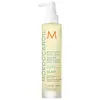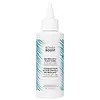What's inside
What's inside
 Key Ingredients
Key Ingredients

No key ingredients
 Benefits
Benefits

 Concerns
Concerns

 Ingredients Side-by-side
Ingredients Side-by-side

Water
Skin ConditioningDipropylene Glycol
HumectantPentylene Glycol
Skin ConditioningButylene Glycol
HumectantArgania Spinosa Kernel Oil
EmollientMentha Arvensis Leaf Oil
MaskingSwertia Japonica Extract
Skin ConditioningHordeum Distichon Extract
Skin ProtectingMelissa Officinalis Leaf Extract
Skin ConditioningOriganum Majorana Leaf Extract
AntiseborrhoeicFumaria Officinalis Extract
Skin ConditioningPrunus Yedoensis Leaf Extract
Skin ConditioningEriobotrya Japonica Leaf Extract
Skin ConditioningPEG-60 Hydrogenated Castor Oil
EmulsifyingParfum
MaskingEthylhexylglycerin
Skin ConditioningDipotassium Glycyrrhizate
HumectantSodium Citrate
BufferingGlucosyl Hesperidin
HumectantCitric Acid
BufferingPhenoxyethanol
PreservativeSodium Benzoate
MaskingCitral
PerfumingLimonene
PerfumingLinalool
PerfumingWater, Dipropylene Glycol, Pentylene Glycol, Butylene Glycol, Argania Spinosa Kernel Oil, Mentha Arvensis Leaf Oil, Swertia Japonica Extract, Hordeum Distichon Extract, Melissa Officinalis Leaf Extract, Origanum Majorana Leaf Extract, Fumaria Officinalis Extract, Prunus Yedoensis Leaf Extract, Eriobotrya Japonica Leaf Extract, PEG-60 Hydrogenated Castor Oil, Parfum, Ethylhexylglycerin, Dipotassium Glycyrrhizate, Sodium Citrate, Glucosyl Hesperidin, Citric Acid, Phenoxyethanol, Sodium Benzoate, Citral, Limonene, Linalool
Water
Skin ConditioningAloe Barbadensis Leaf Juice
Skin ConditioningButylene Glycol
HumectantGlycerin
HumectantPropanediol
SolventPolysorbate 20
EmulsifyingPentylene Glycol
Skin ConditioningCaprylyl Glycol
EmollientParfum
MaskingSodium Benzoate
MaskingPanthenol
Skin ConditioningPotassium Sorbate
PreservativeEthylhexylglycerin
Skin ConditioningPPG-26-Buteth-26
Skin ConditioningPEG-40 Hydrogenated Castor Oil
EmulsifyingSerenoa Serrulata Fruit Extract
Skin ConditioningCitric Acid
BufferingDimethyl Phenylethyl Carbinyl Acetate
PerfumingBenzyl Benzoate
AntimicrobialHexamethylindanopyran
MaskingTrimethylbenzenepropanol
MaskingTerpineol
MaskingAcetyl Cedrene
Coffea Arabica Seed Extract
MaskingApigenin
AntioxidantAlpha-Damascone
MaskingChamomilla Recutita Flower Extract
MaskingEquisetum Arvense Extract
AstringentRosmarinus Officinalis Leaf Extract
AntimicrobialUrtica Dioica Leaf Extract
Skin ConditioningOleanolic Acid
Skin ConditioningBiotinoyl Tripeptide-1
Water, Aloe Barbadensis Leaf Juice, Butylene Glycol, Glycerin, Propanediol, Polysorbate 20, Pentylene Glycol, Caprylyl Glycol, Parfum, Sodium Benzoate, Panthenol, Potassium Sorbate, Ethylhexylglycerin, PPG-26-Buteth-26, PEG-40 Hydrogenated Castor Oil, Serenoa Serrulata Fruit Extract, Citric Acid, Dimethyl Phenylethyl Carbinyl Acetate, Benzyl Benzoate, Hexamethylindanopyran, Trimethylbenzenepropanol, Terpineol, Acetyl Cedrene, Coffea Arabica Seed Extract, Apigenin, Alpha-Damascone, Chamomilla Recutita Flower Extract, Equisetum Arvense Extract, Rosmarinus Officinalis Leaf Extract, Urtica Dioica Leaf Extract, Oleanolic Acid, Biotinoyl Tripeptide-1
Ingredients Explained
These ingredients are found in both products.
Ingredients higher up in an ingredient list are typically present in a larger amount.
Butylene Glycol (or BG) is used within cosmetic products for a few different reasons:
Overall, Butylene Glycol is a safe and well-rounded ingredient that works well with other ingredients.
Though this ingredient works well with most skin types, some people with sensitive skin may experience a reaction such as allergic rashes, closed comedones, or itchiness.
Learn more about Butylene GlycolCitric Acid is an alpha hydroxy acid (AHA) naturally found in citrus fruits like oranges, lemons, and limes.
Like other AHAs, citric acid can exfoliate skin by breaking down the bonds that hold dead skin cells together. This helps reveal smoother and brighter skin underneath.
However, this exfoliating effect only happens at high concentrations (20%) which can be hard to find in cosmetic products.
Due to this, citric acid is usually included in small amounts as a pH adjuster. This helps keep products slightly more acidic and compatible with skin's natural pH.
In skincare formulas, citric acid can:
While it can provide some skin benefits, research shows lactic acid and glycolic acid are generally more effective and less irritating exfoliants.
Most citric acid used in skincare today is made by fermenting sugars (usually from molasses). This synthetic version is identical to the natural citrus form but easier to stabilize and use in formulations.
Read more about some other popular AHA's here:
Learn more about Citric AcidEthylhexylglycerin (we can't pronounce this either) is commonly used as a preservative and skin softener. It is derived from glyceryl.
You might see Ethylhexylglycerin often paired with other preservatives such as phenoxyethanol. Ethylhexylglycerin has been found to increase the effectiveness of these other preservatives.
Parfum is a catch-all term for an ingredient or more that is used to give a scent to products.
Also called "fragrance", this ingredient can be a blend of hundreds of chemicals or plant oils. This means every product with "fragrance" or "parfum" in the ingredients list is a different mixture.
For instance, Habanolide is a proprietary trade name for a specific aroma chemical. When used as a fragrance ingredient in cosmetics, most aroma chemicals fall under the broad labeling category of “FRAGRANCE” or “PARFUM” according to EU and US regulations.
The term 'parfum' or 'fragrance' is not regulated in many countries. In many cases, it is up to the brand to define this term.
For instance, many brands choose to label themselves as "fragrance-free" because they are not using synthetic fragrances. However, their products may still contain ingredients such as essential oils that are considered a fragrance by INCI standards.
One example is Calendula flower extract. Calendula is an essential oil that still imparts a scent or 'fragrance'.
Depending on the blend, the ingredients in the mixture can cause allergies and sensitivities on the skin. Some ingredients that are known EU allergens include linalool and citronellol.
Parfum can also be used to mask or cover an unpleasant scent.
The bottom line is: not all fragrances/parfum/ingredients are created equally. If you are worried about fragrances, we recommend taking a closer look at an ingredient. And of course, we always recommend speaking with a professional.
Learn more about ParfumPentylene glycol is typically used within a product to thicken it. It also adds a smooth, soft, and moisturizing feel to the product. It is naturally found in plants such as sugar beets.
The hydrophilic trait of Pentylene Glycol makes it a humectant. As a humectant, Pentylene Glycol helps draw moisture from the air to your skin. This can help keep your skin hydrated.
This property also makes Pentylene Glycol a great texture enhancer. It can also help thicken or stabilize a product.
Pentylene Glycol also acts as a mild preservative and helps to keep a product microbe-free.
Some people may experience mild eye and skin irritation from Pentylene Glycol. We always recommend speaking with a professional about using this ingredient in your routine.
Pentylene Glycol has a low molecular weight and is part of the 1,2-glycol family.
Learn more about Pentylene GlycolSodium Benzoate is a preservative. It's used in both cosmetic and food products to inhibit the growth of mold and bacteria. It is typically produced synthetically.
Both the US FDA and EU Health Committee have approved the use of sodium benzoate. In the US, levels of 0.1% (of the total product) are allowed.
Sodium benzoate works as a preservative by inhibiting the growth of bacteria inside of cells. It prevents the cell from fermenting a type of sugar using an enzyme called phosphofructokinase.
It is the salt of benzoic acid. Foods containing sodium benzoate include soda, salad dressings, condiments, fruit juices, wines, and snack foods.
Studies for using ascorbic acid and sodium benzoate in cosmetics are lacking, especially in skincare routines with multiple steps.
We always recommend speaking with a professional, such as a dermatologist, if you have any concerns.
Learn more about Sodium BenzoateWater. It's the most common cosmetic ingredient of all. You'll usually see it at the top of ingredient lists, meaning that it makes up the largest part of the product.
So why is it so popular? Water most often acts as a solvent - this means that it helps dissolve other ingredients into the formulation.
You'll also recognize water as that liquid we all need to stay alive. If you see this, drink a glass of water. Stay hydrated!
Learn more about Water